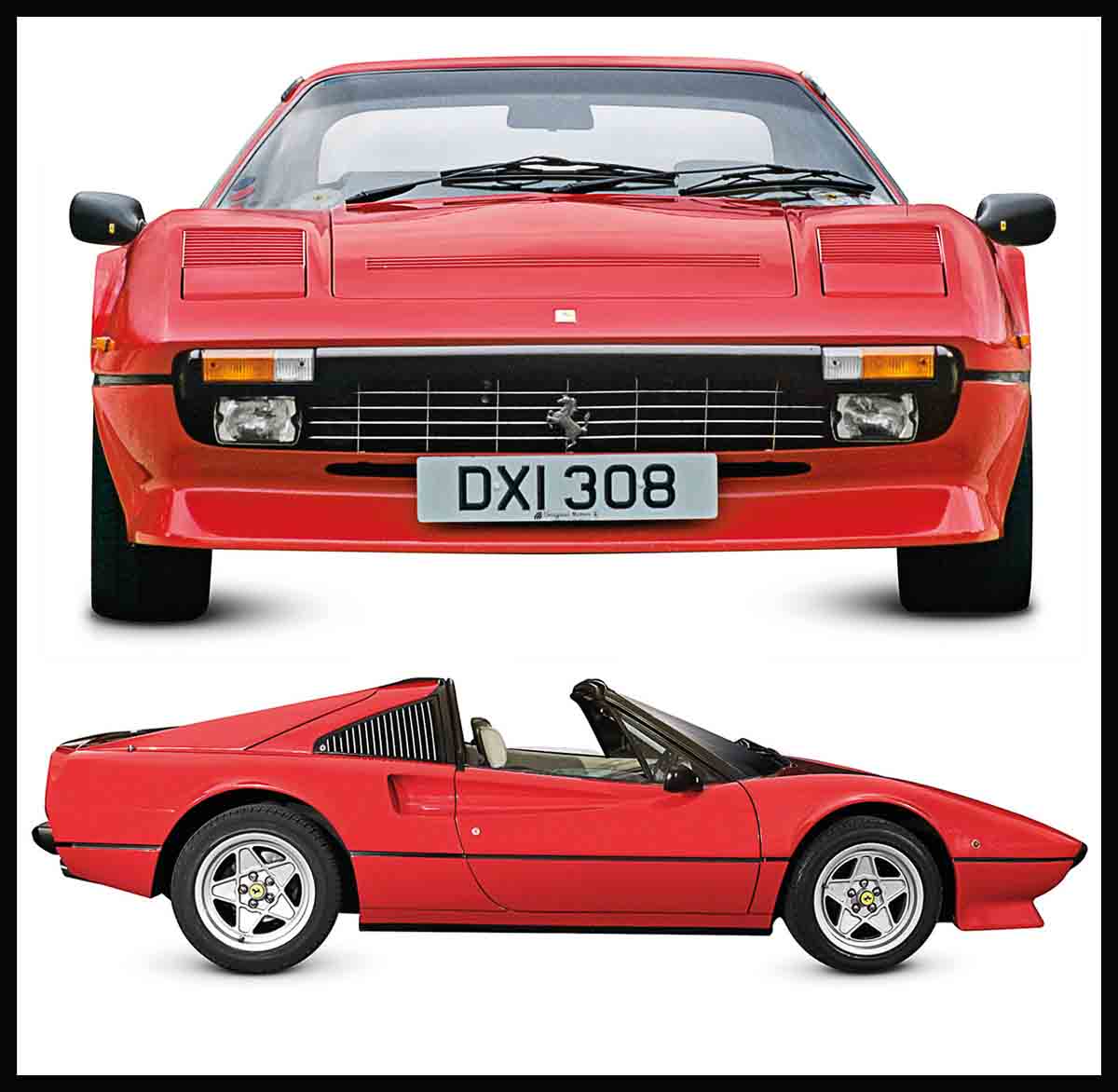
Mid-Engined Marvels
Sports cars at all levels adopted a race-proven, mid-engined layout in the 1970s. Mounting the motor amidships provided extra cornering agility, greater handling precision, and better traction. Moving the engine behind the passengers also meant the nose could be lower, which helped to improve aerodynamic efficiency and inspired some spectacular, wedge-shaped body designs. Luggage space could be reduced, however, and engine access was often tricky. Mid-engined cars also proved to be noisy, and in some designs the gear-change was poor. But even with small engines and relatively little power, they were the ultimate in driving thrills and drama.
Ferrari 308 GTS, 1977
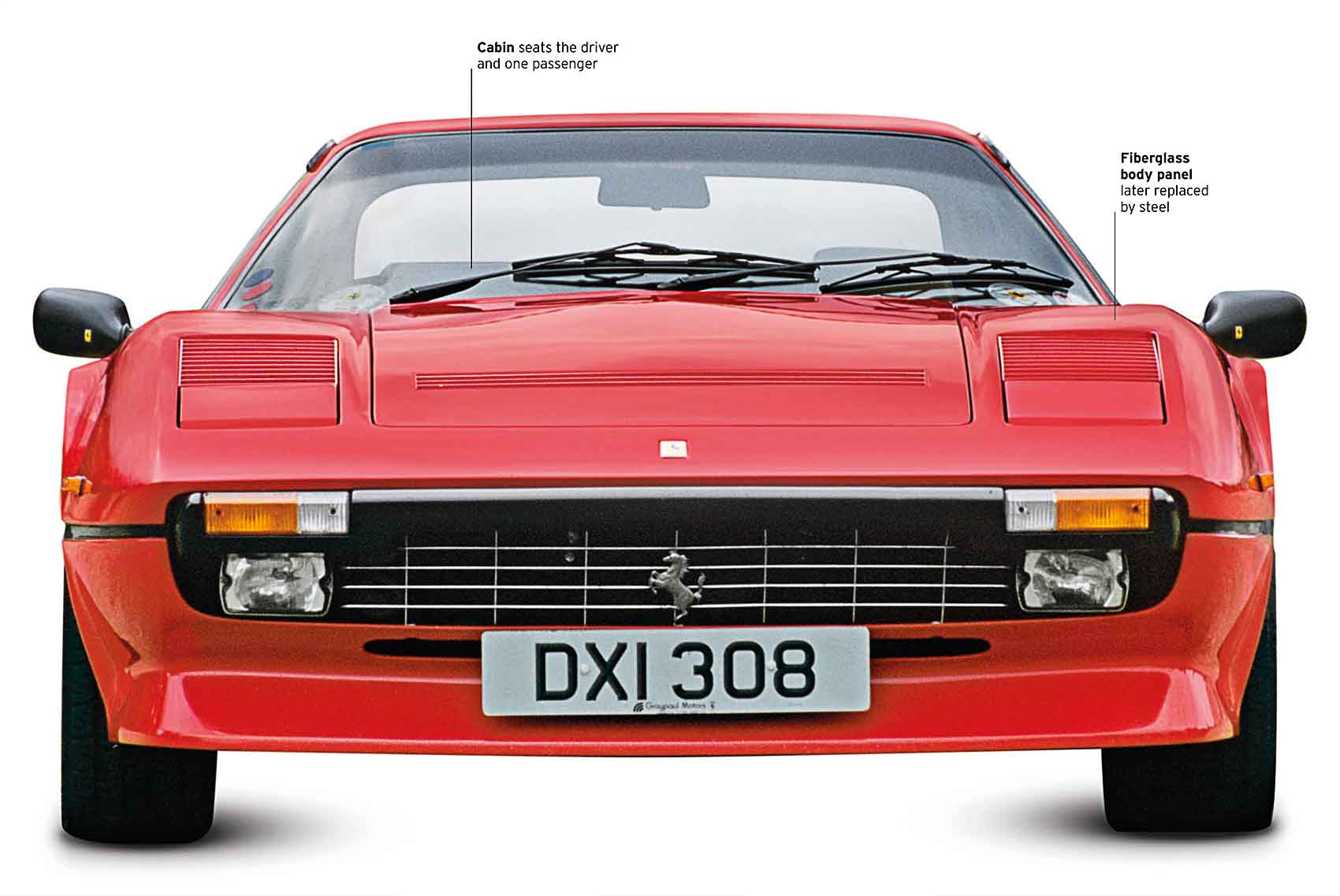
| Origin | Italy |
| Engine | 2,926 cc, V8 |
| Top speed | 154 mph (249 km/h) |
One of the bestselling Ferraris ever, Pininfarina designed the gorgeous body and Scaglietti built it. The engine and gearbox were both inherited from the 308 GT4. Later cars had four valves per cylinder and Bosch fuel injection.
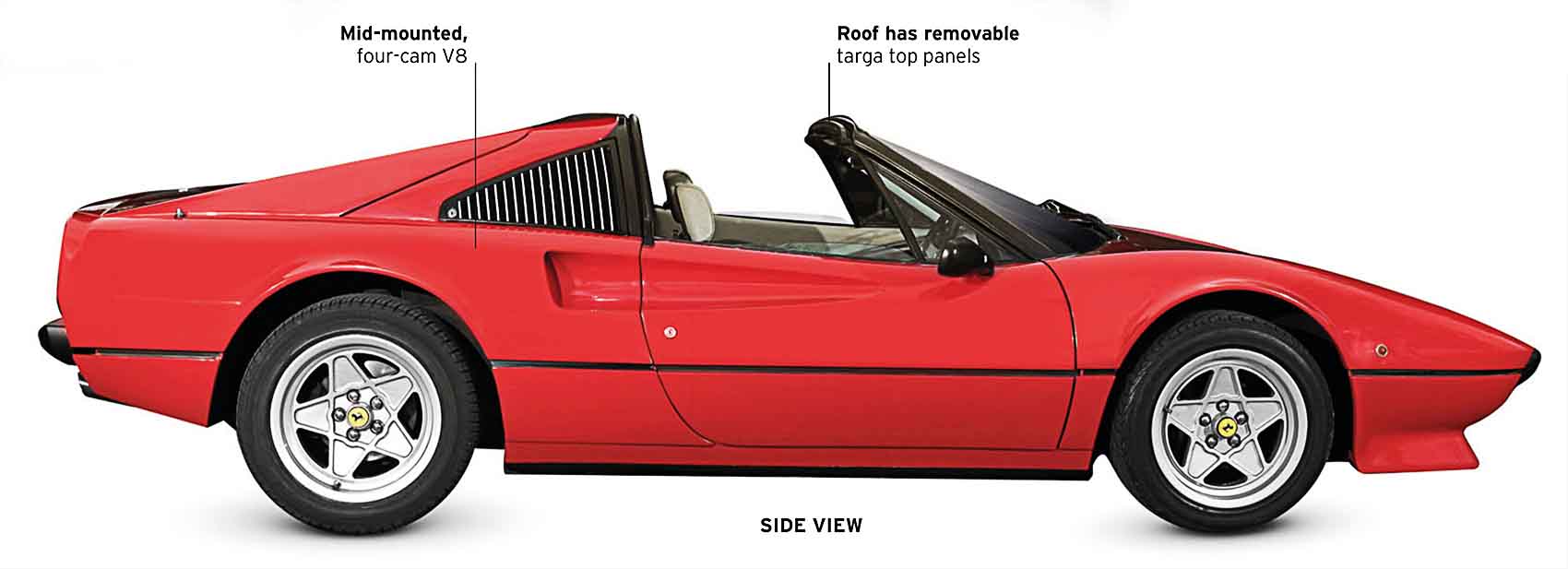
Familiar features
The 308 featured design details from the Dino 246, while a black stripe along the side evoked the 365 GT4’s familiar twin-body, shell appearance.
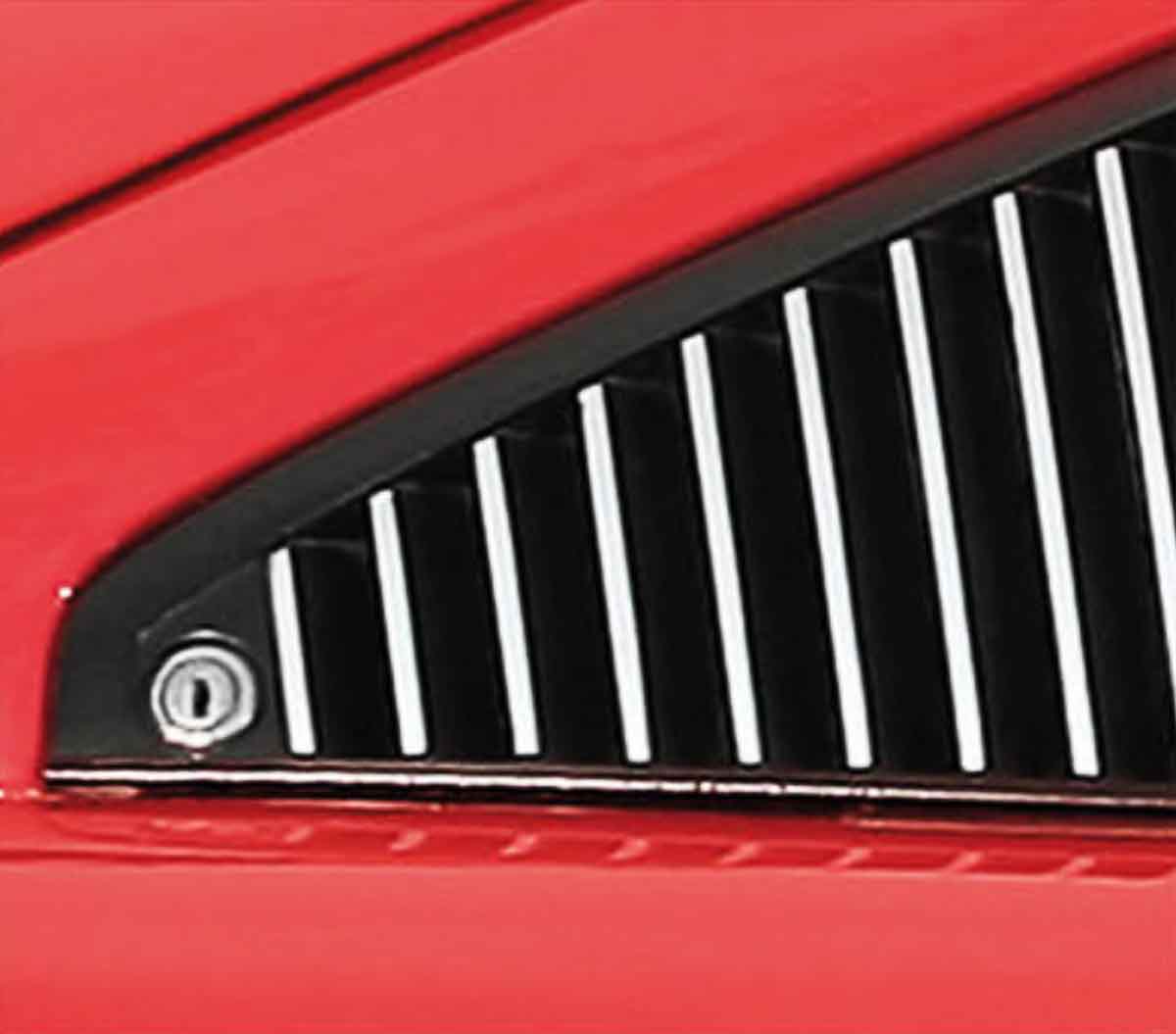
Sleek design
Locating the engine behind the passengers allowed for a low, sloping bonnet that forced air downwards onto the nose and front wheels, improving grip. To provide cooling, conical air inlets were positioned behind the front doors, channelling the air to the engine bay.
Fiat X1/9, 1972
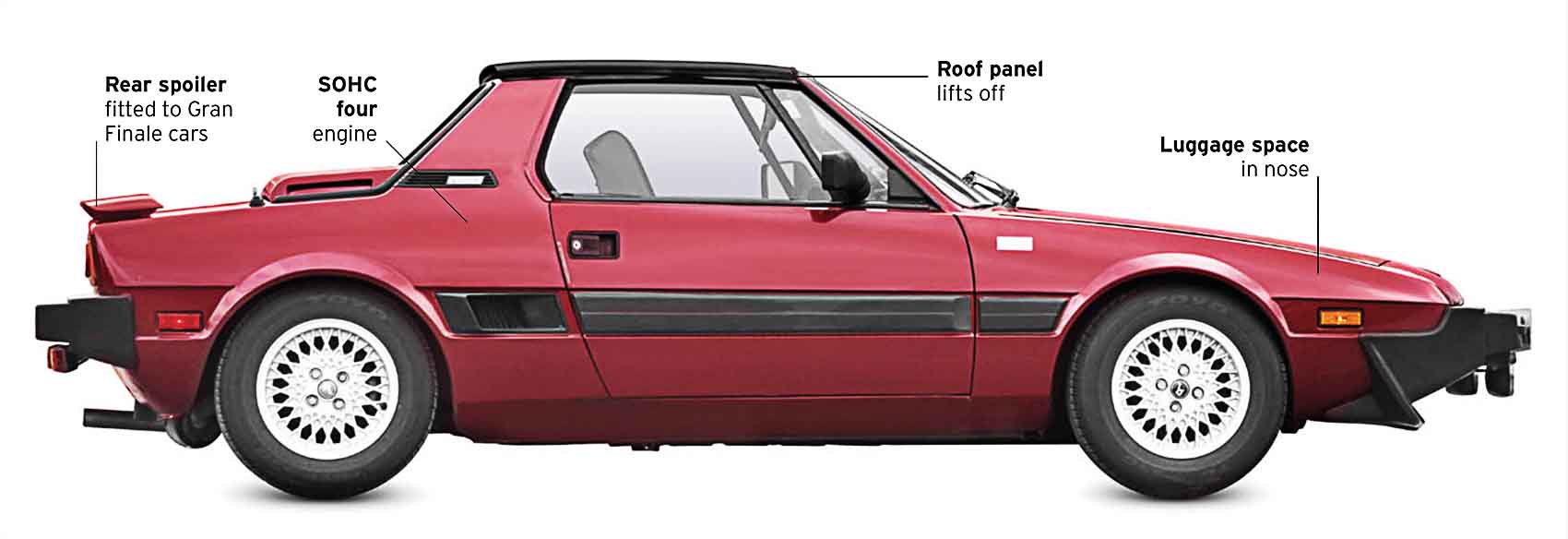
| Origin | Italy |
| Engine | 1,498 cc, straight-four |
| Top speed | 110 mph (177 km/h) |
The X1/9 brought mid-engined sports cars to the masses. Bertone designed and built the wedge-shaped body, and Fiat supplied the mechanical parts. However, from 1982 Bertone took over final assembly and marketing. The X1/9 remained popular in Europe and the US right up to 1989.
Matra-Simca Bagheera, 1973
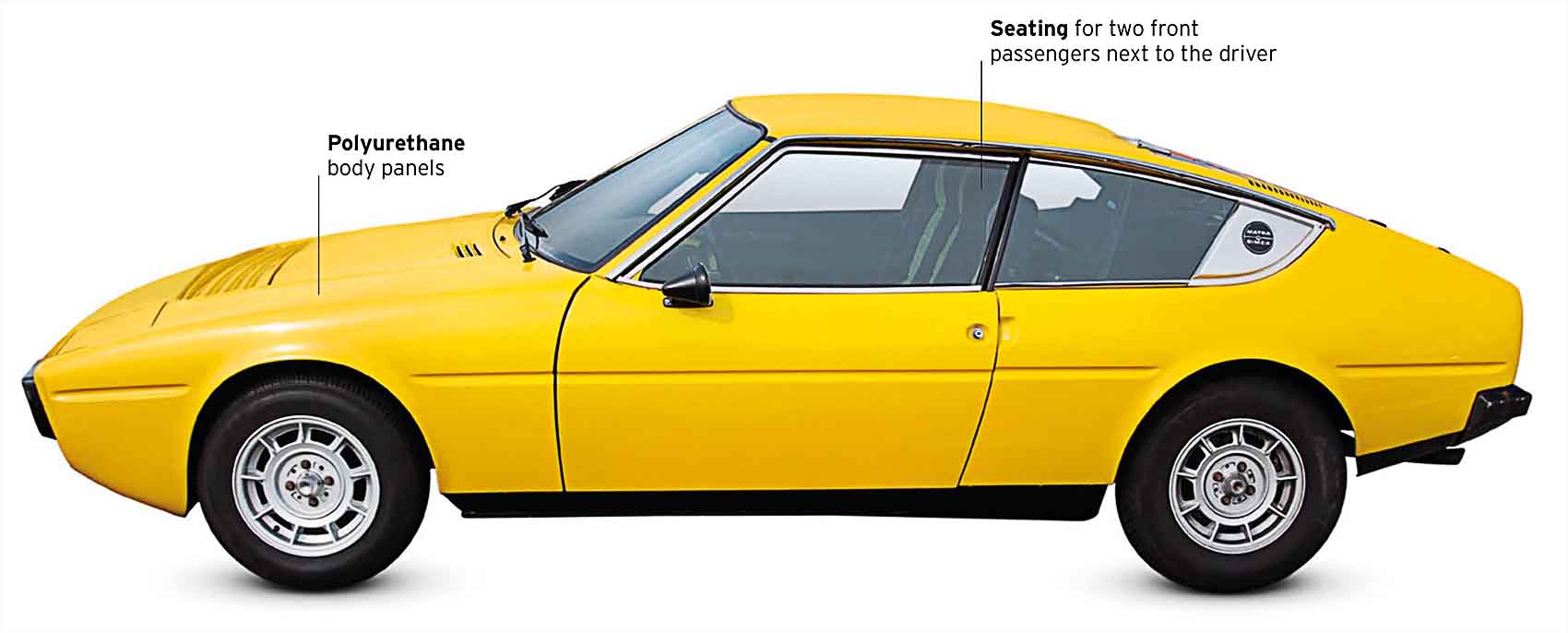
| Origin | France |
| Engine | 1,422 cc, straight-four |
| Top speed | 110 mph (177 km/h) |
An aerospace company built this mid-engined coupe using engines and transmissions from Simca family cars. It had unusual three-abreast seating and a plastic body. A facelift of the car undertaken in 1976 affected almost every panel, and smoothed out the styling. It was replaced by the Murena, another three-seater, in 1980.
Lancia Beta Montecarlo, 1975
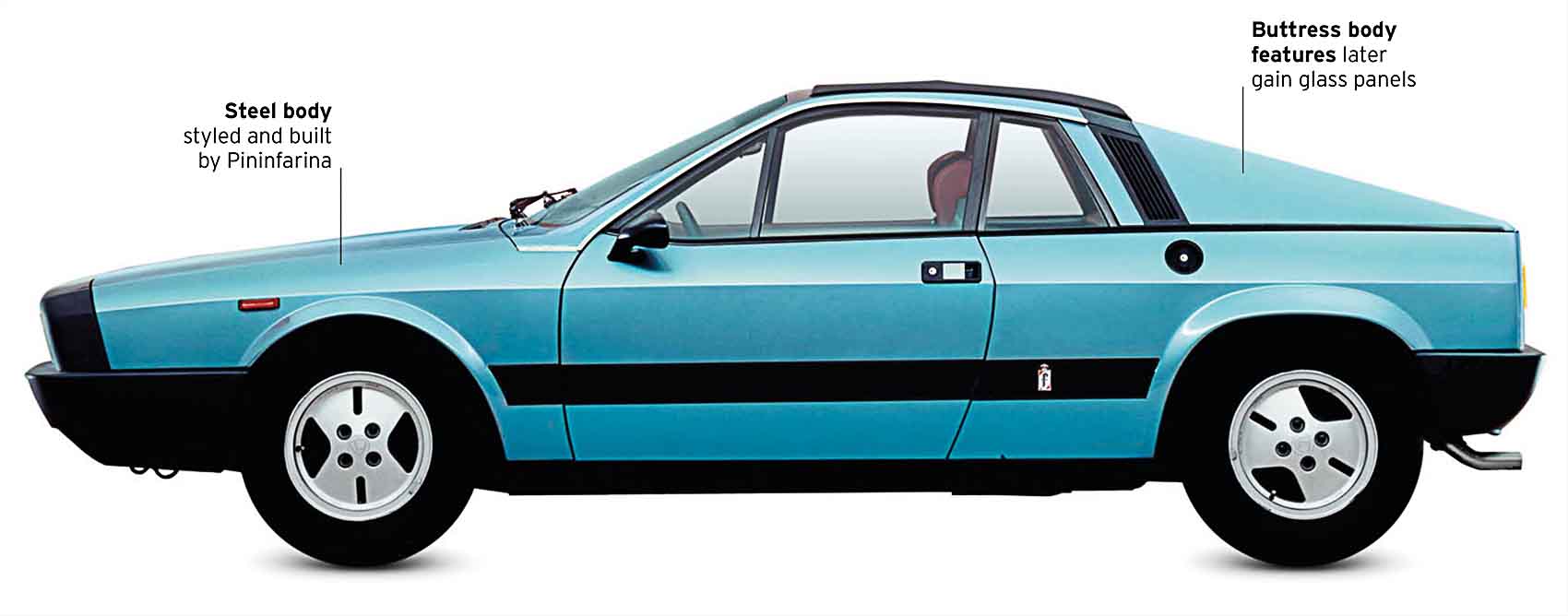
| Origin | Italy |
| Engine | 1,756 cc, straight-four |
| Top speed | 118 mph (190 km/h) |
Proposed in 1969 as a V6 Fiat but launched as a four-cylinder Lancia, this model was reworked in 1978 with glass panels in the flying buttresses for better visibility, and the brake servo was removed. Lancia ultimately developed this into a successful turbo racing car.
Lotus Esprit Turbo, 1980
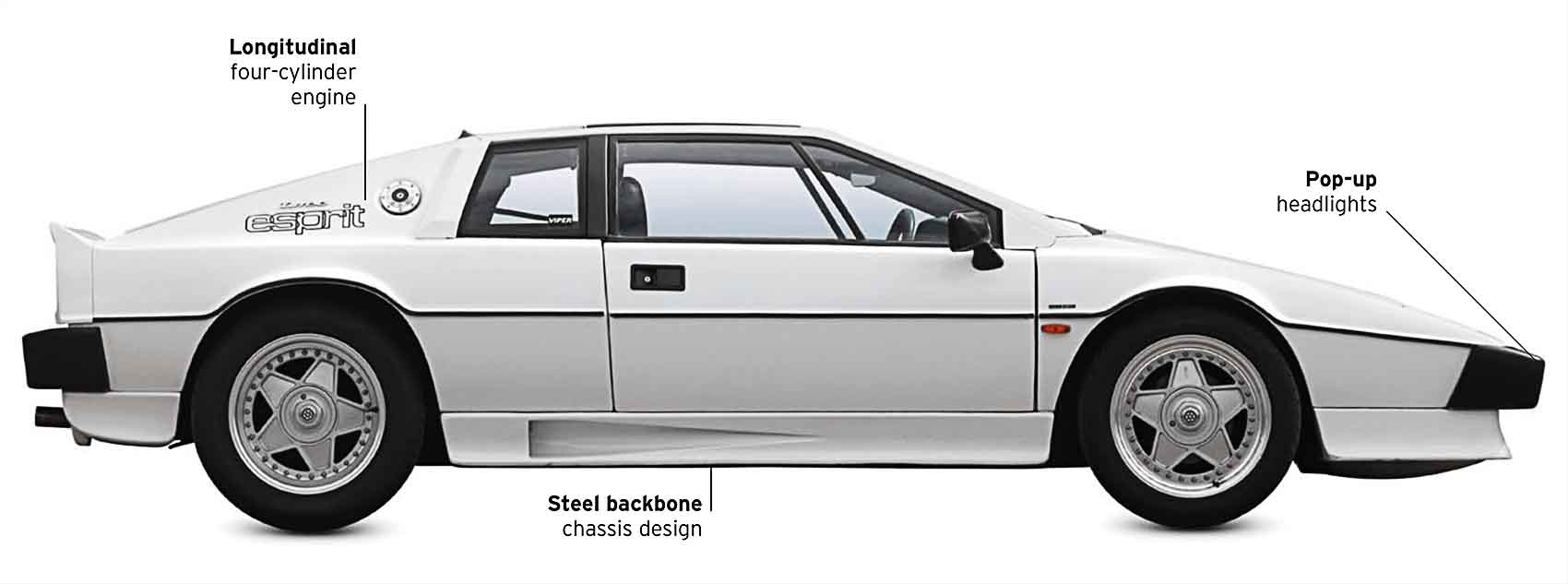
| Origin | UK |
| Engine | 2,174 cc, straight-four |
| Top speed | 148 mph (238 km/h) |
Lotus road cars reached supercar status when the exotic Giugiaro-styled Esprit (introduced in 1976) was given a capacity upgrade and a turbocharger.
It is a quote. The Classic Car Book – The Definitive Visual History 2016




